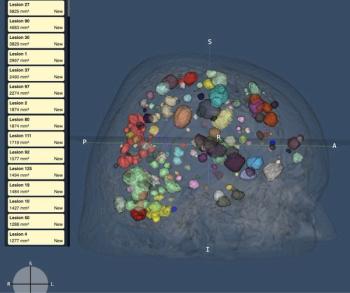
Electronic viewboxes bring analog and digital images together
Any PACS display monitor can be converted into a rudimentary viewbox for looking at comparison studies, according to researchers at the University of Pennsylvania.
Any PACS display monitor can be converted into a rudimentary viewbox for looking at comparison studies, according to researchers at the University of Pennsylvania.
Side-by-side comparison of PACS and film-based studies is often inconvenient because of the absence of a viewbox near the PACS workstation.
Radiologists at the university developed a solution to the nuisance of having to move back and forth between the PACS monitor anda traditional viewbox when companion studies are available only on film.
"With a simple maneuver, any PACS display monitor can be used as a rudimentary viewbox, providing a convenient and ergonomically effective alternative," said Dr. Charles T. Lau, an assistant professor of radiology at the University of Pennsylvania.
Lau's "electronic viewbox" permits side-by-side comparisons of analog and digital studies at the PACS workstation. It requires no conventional viewbox, no additional hardware, and no financial investment.
Merely by zooming a random bright pixel or region in any radiographic image to the full size of the screen on which it is to be displayed, a radiologist can create a large homogeneously illuminated field against which the film may be held, according to the researchers. Their efforts were described in the March issue of the American Journal of Roentgenology.
On PACS workstations where the magnitude of maximum zoom is limited, adjusting the window and level values to "burn out" any radiographic image can create a similar effect, Lau said.
"We have found that the electronic viewbox not only has encouraged more careful comparison of PACS- and film-based studies, but also may have limited oversights arising during repetitive comparison tasks, such as lung nodules or lymph nodes," he said.
Lau admits that true viewboxes, which meet rigorous brightness and illumination standards, may be more clinically appropriate when attempting to discern small or subtle features. But in a great number of day-to-day situations, the potential benefits of the electronic viewbox most likely outweigh these limitations, he said.
Newsletter
Stay at the forefront of radiology with the Diagnostic Imaging newsletter, delivering the latest news, clinical insights, and imaging advancements for today’s radiologists.




